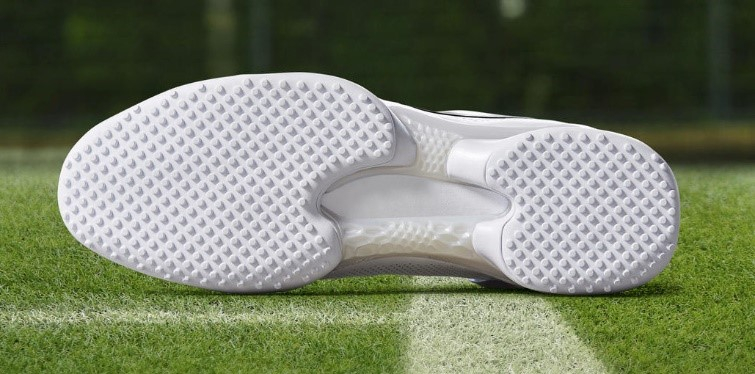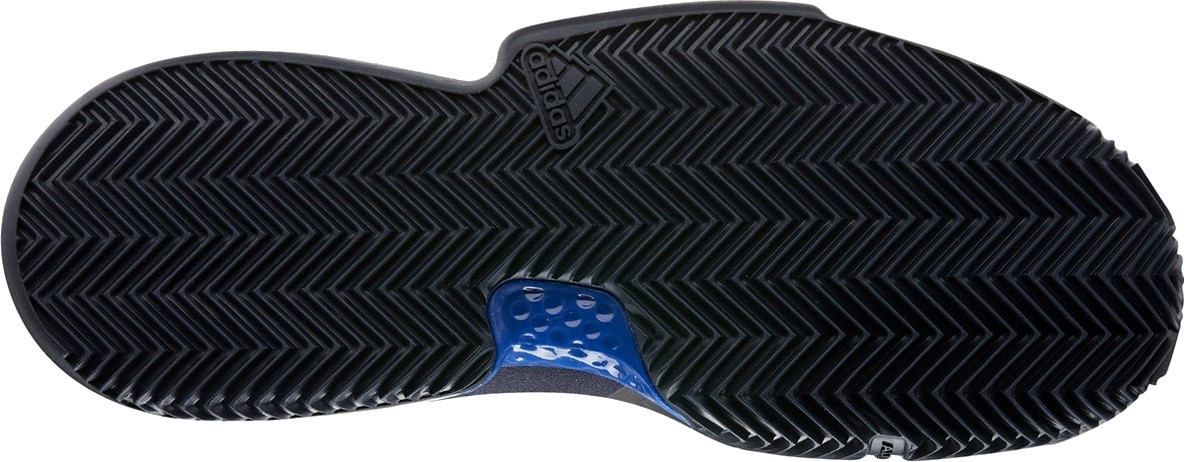Best tennis shoes selection
Is it important to wear tennis shoes while playing tennis?
Before we decide what are the best sports shoes someone should use in tennis, we should consider the movement requirements of the sport itself. Tennis is a multidirectional sport, specifically the player has to move fast for short distances (usually 2-8 meters) and execute fast direction changes, either by running or with lateral steps. Also, small jumps during hits are very common, especially from advanced tennis players.
Given the above fast multidirectional movements, it is important that the tennis players’ shoes meet these requirements and give the necessary grip (safety) and cushioning (shock absorption) to the player on the tennis court.
There are 2 important parts in every tennis shoe: These are the out-sole and the mid-sole. The out-sole is the bottom surface of the shoe, the part that comes in direct contact with the court. The mid-sole is the layer right underneath the outsole.
The purpose of the outsole is to provide the player with the stability and traction (s)he needs during fast lateral movements, while the mid-sole is the part that gives the cushioning needed on the tennis court. In other words, the role of the mid-sole is to absorb foot-ground contact vibrations and therefore make the shoe feel as comfortable as possible.
There are 3 types of tennis courts: hard courts, clay courts and synthetic grass (or natural grass) tennis courts. Hard courts are usually paved asphalt to create the court with layers of color-coating. Clay courts are just that, a court made up of clay in a field and synthetic grass court usually have sand on them for easy sliding.
Given these 3 types of tennis courts, there are subsequently 3 types of tennis shoes: Hard court tennis shoes, clay court tennis shoes and grass court shoes which mainly differ from one another on the outsole. On the contrary, they all have a wide outsole that increases traction and stability during fast sprints and sudden stops. This is the main reason why it is dangerous to play tennis with running shoes, although they offer excellent shock absorption. They lack grip on quick bursts and fast changes in direction.
Hard court tennis shoes: If you look at the bottom of these shoes, they are covered in a variety of patterns. There will probably be some herringbone texture or some other design-type things on their out-sole. The job of these hard-court shoes is to give traction to the player and also to be durable over time.
Clay Court tennis Shoes: A clay court tennis shoe on the other hand, usually has a herringbone pattern going across the outsole in order to help grip on the clay court without retaining a lot of clay sand in its sole. There is also more lateral support in the upper part of the clay court shoe because sliding is very common on this type of court. Finally, the upper part of the shoe is usually a little bit tighter and normally is not a mesh type fabric because it helps keep the clay sand from getting inside the shoe.
So, if you play at a club where there are both hard and clay courts available and you’re not quite sure on which surface you’re going to be playing on, getting a hard-court shoe is probably the best choice unless the clay courts are very dry and slippery.
Grass Court tennis Shoes: This is really a specialized tennis shoe. The bottom has little nubs or rubbery cleats to help grip on the very slippery grass surface. Grass court shoes are suitable only for natural grass court.

How Often Should I Replace My Tennis Shoes?
Well, the best way to decide is to look at the bottom of your tennis shoes. If you notice that the out-sole is starting to wear off, so that you can now see the mid-sole, the layer under the out-sole, that tells you that the traction on your shoe has already started to lose its quality and becomes slippery.
There is a rule of thumb on this and it is that, if you play tennis 2 to 3 times a week in one pair of shoes, you probably need a new pair about every six months. But that is just a rule of thumb and your experience may differ. I think it’s better to look at the bottom of your shoes and judge what is going on to help you make the decision whether it’s time for a new pair of tennis shoes.

 Български
Български


